Software laboratory complex for the simulation of laboratory work on the main sections of the course of self-compacting concrete technology for technical specialties. The program complex includes simulation labs:
The virtual laboratory practice is implemented in the form of graphical applications running under the MS Windows operating system.
OBJECTIVE: The determination of the consistency class of self-compacting concrete according to the indicator of concrete mixture spreading on the plane after raising the standard Abrams steel cone. SUMMARY: In the process of performing laboratory work, the diameter of the concrete mixture spreading and its spreading time until the diameter of 500 mm is measured. The test method meets the requirements of DIN EN 206-9.

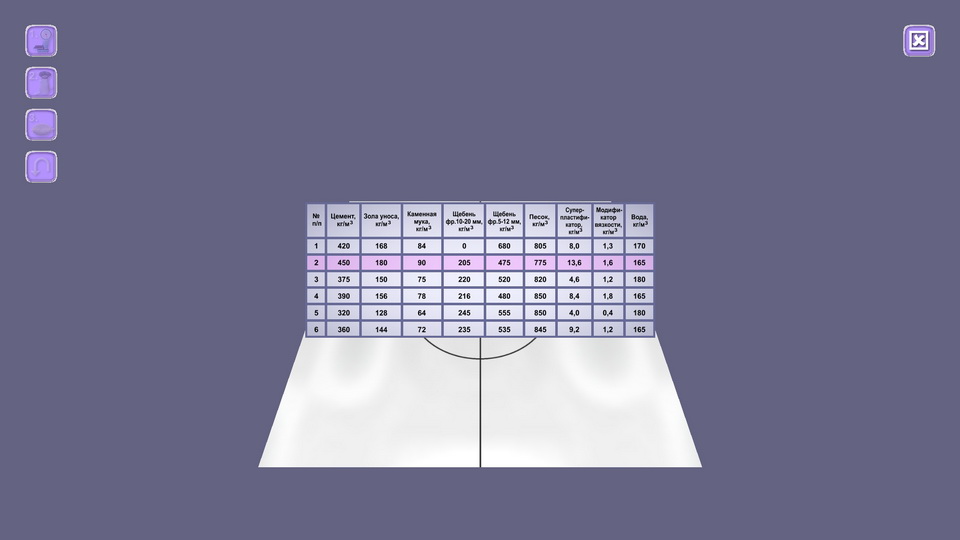
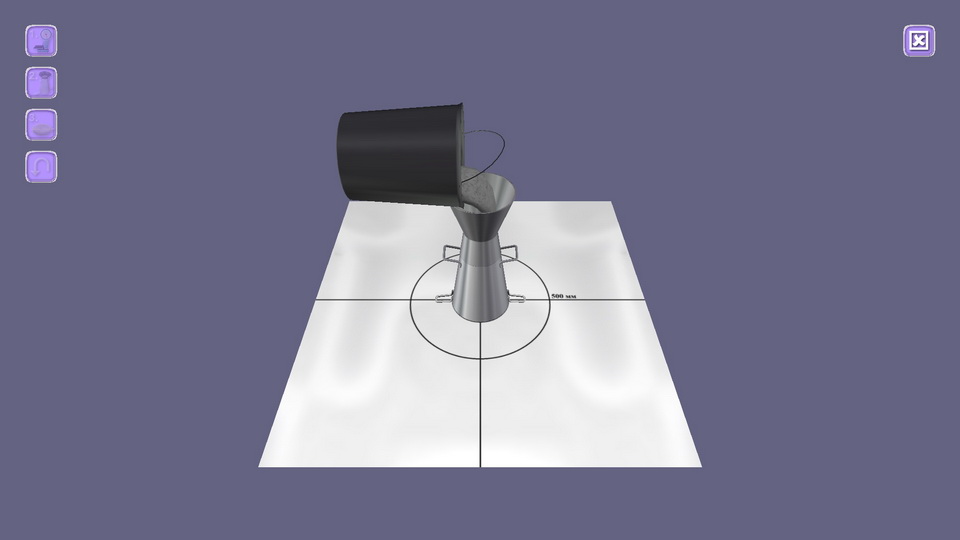

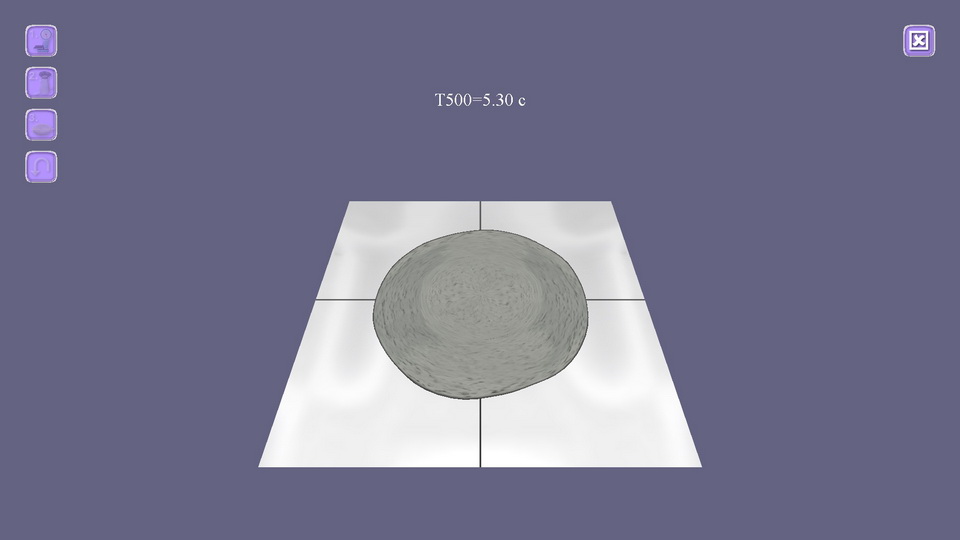


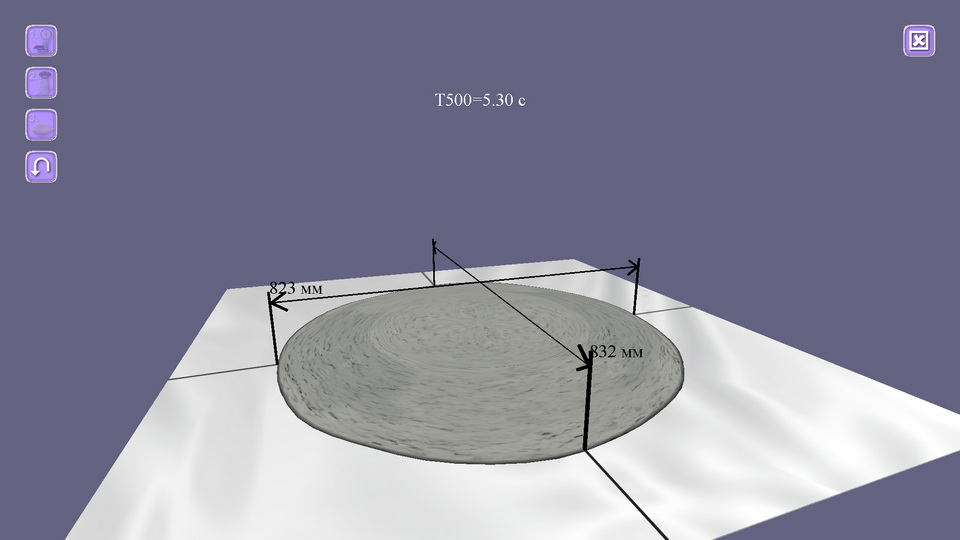

OBJECTIVE: The determination the flow rate and the viscosity of self-compacting concrete through a V-shaped steel funnel with flat walls. SUMMARY: In the process of performing laboratory work, the flow time of a concrete mix from a standard V-shaped funnel is measured. The test method meets the requirements of DIN EN 206-9.
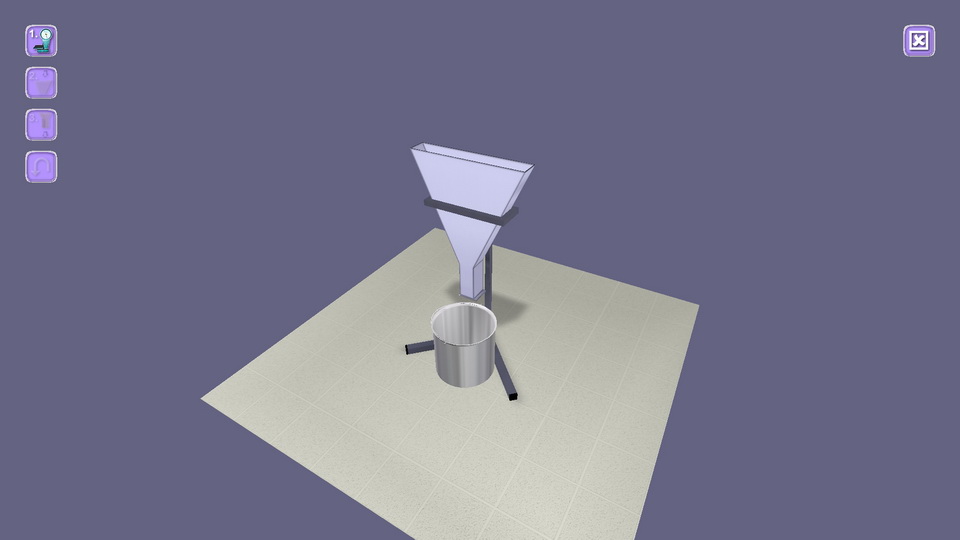
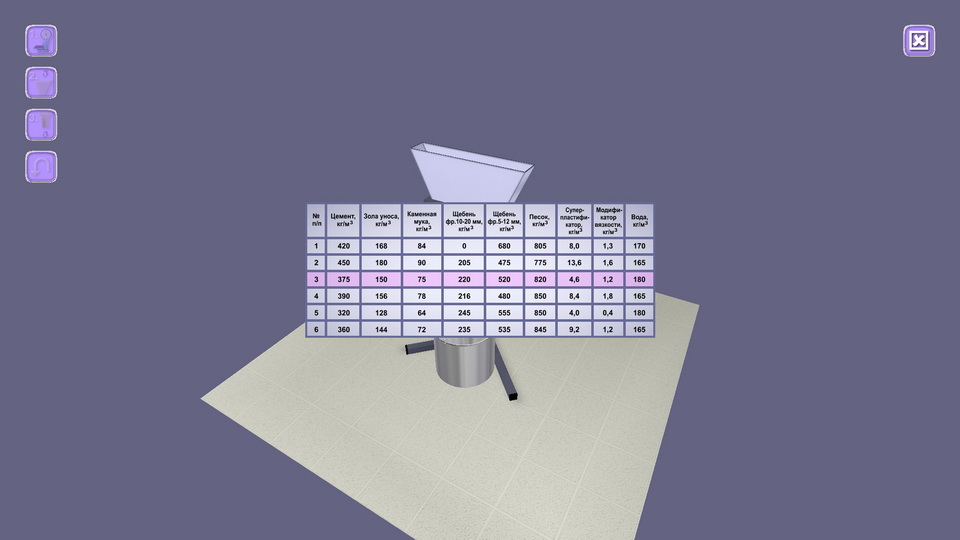
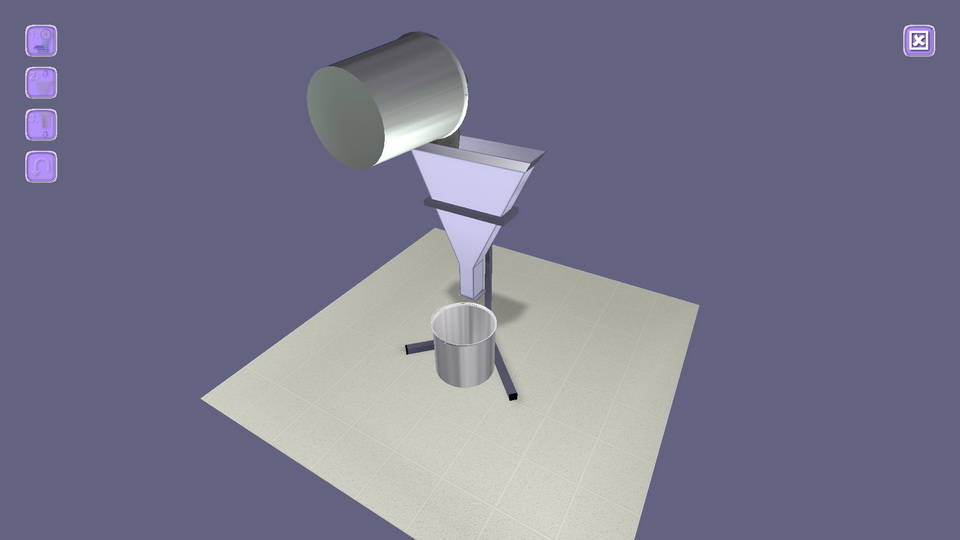




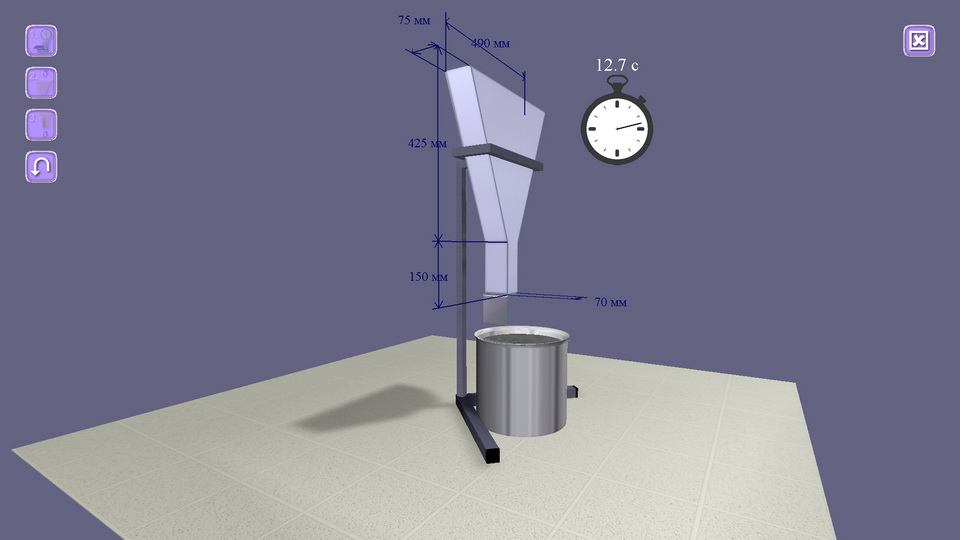
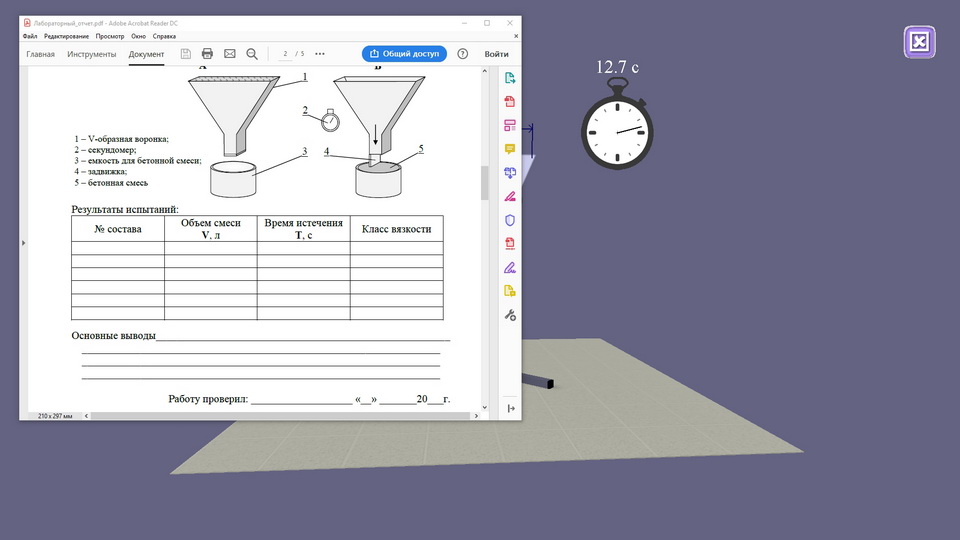
OBJECTIVE: The evaluation the formability of self-compacting concrete by determining the spreadability of the concrete mix and its ability to overcome obstacles made of steel rods in an L-shaped box. SUMMARY: Formability characterizes the behavior of a concrete mix when passing through narrow spaces, for example, between reinforcement bars without stratification and agglomeration of coarse aggregate. For testing, a special metal L-shaped box is used, having a vertical part for loading the mixture, and a horizontal container with installed metal rods and a rising gate. The test method meets the requirements of DIN EN 206-9.
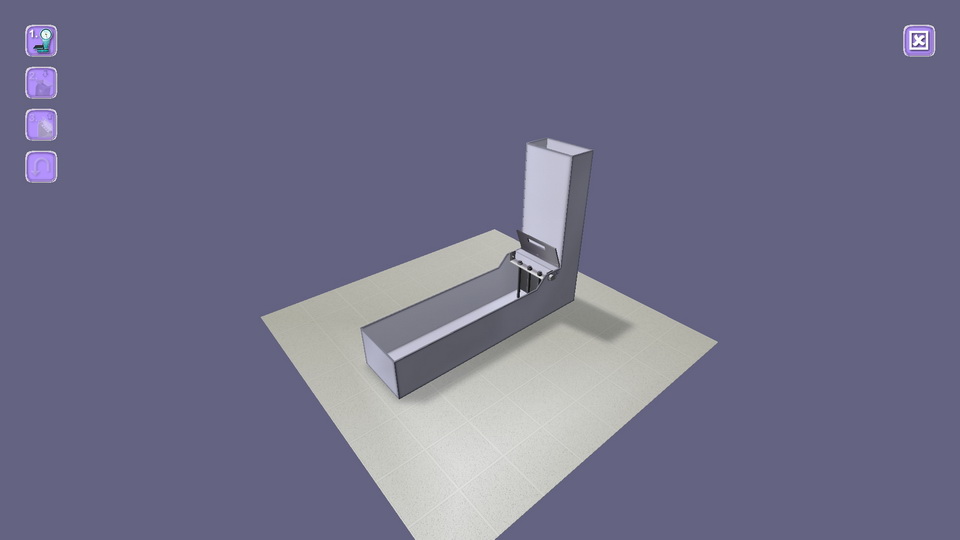
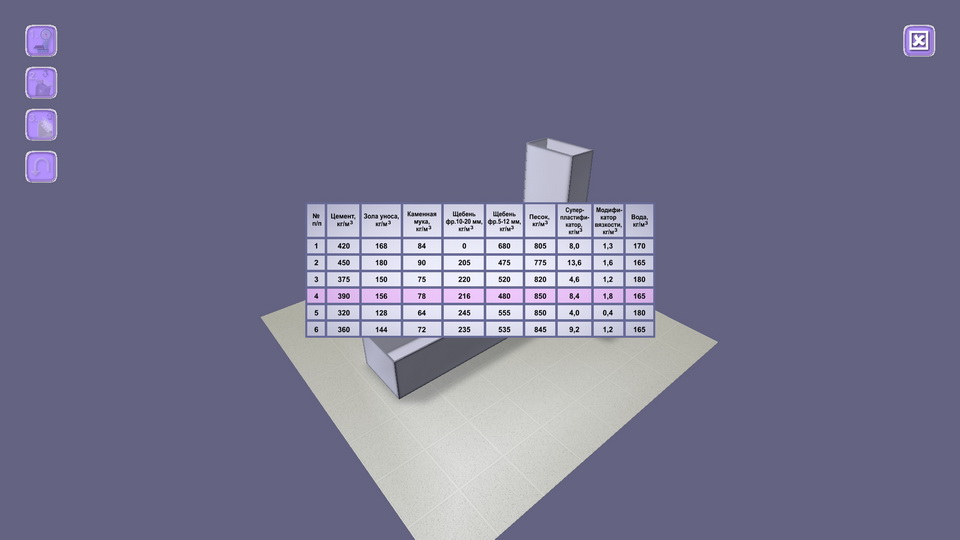



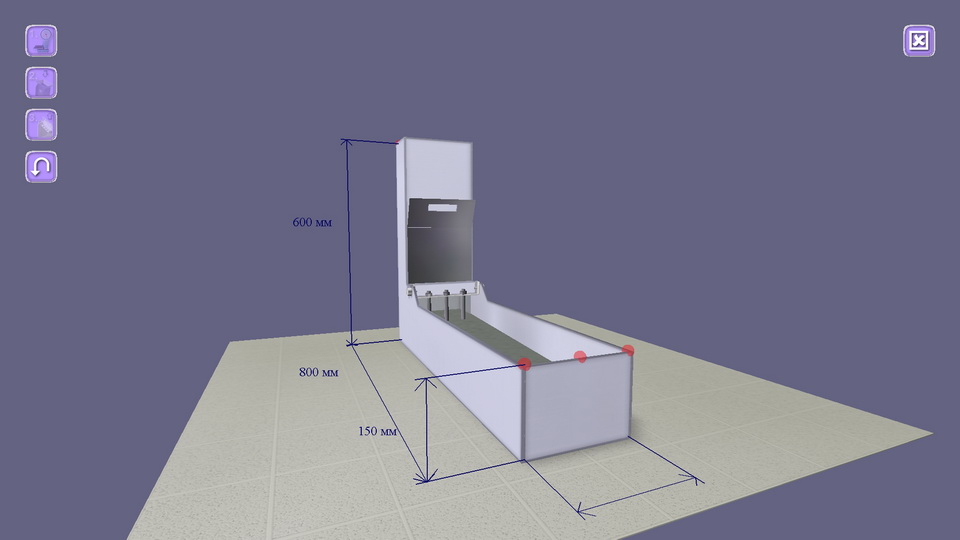
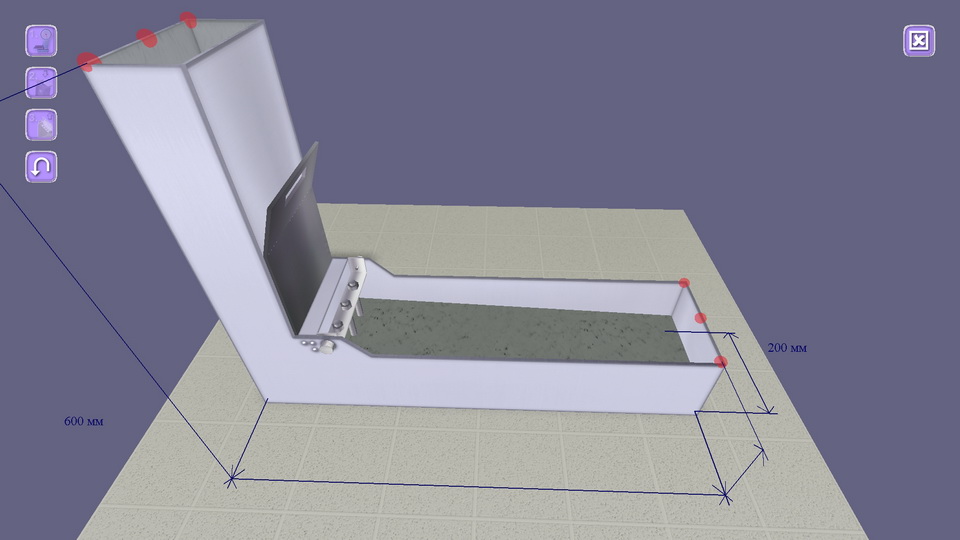
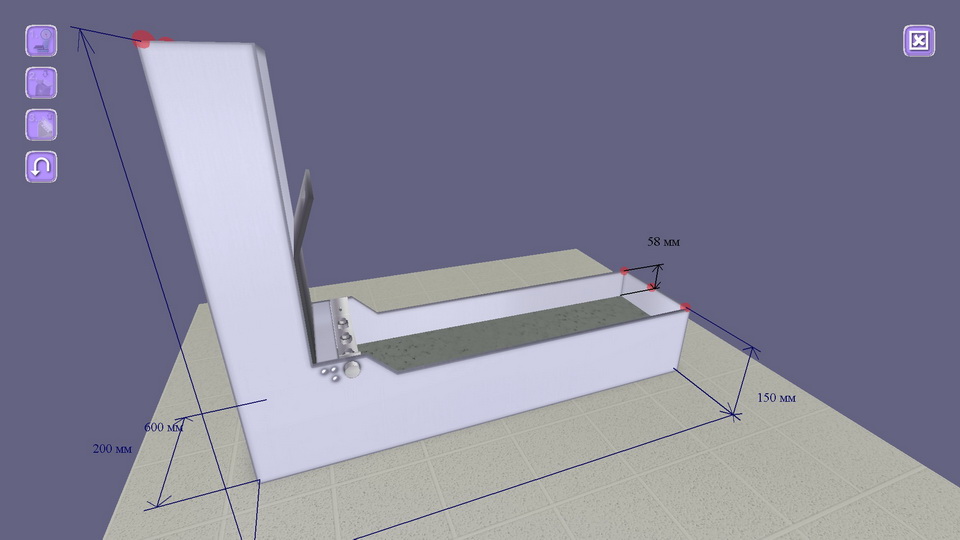
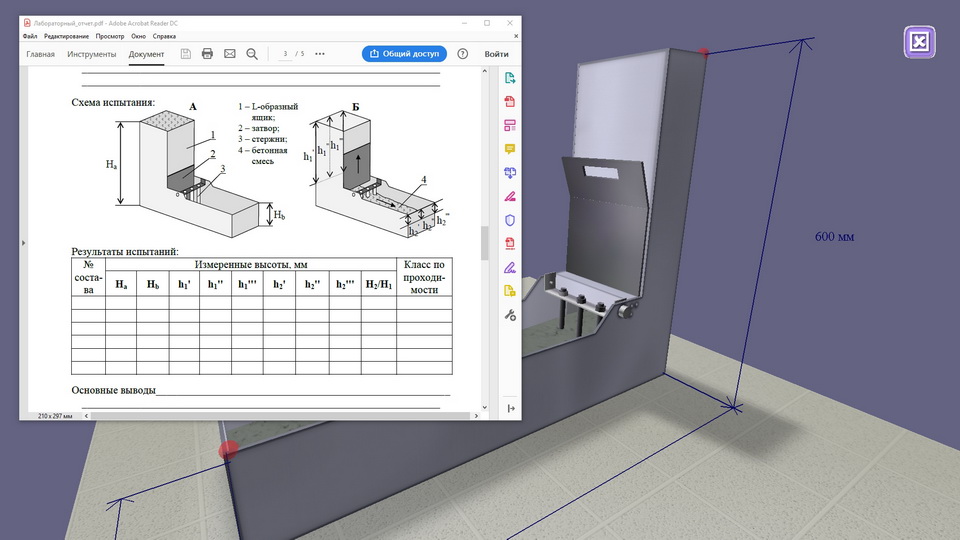
OBJECTIVE: The determination of the permeability of self-compacting concrete through a blocking ring, imitating the dense reinforcement of a reinforced concrete structure, as well as measuring the diameter of a cone spreading. SUMMARY: A special metal ring with vertical rods around the perimeter is used for testing. In the process of performing laboratory work, the height of the concrete mixture inside the ring and at several points outside, as well as the final diameter of the mixture spreading after passing through the rods of the ring are measured.



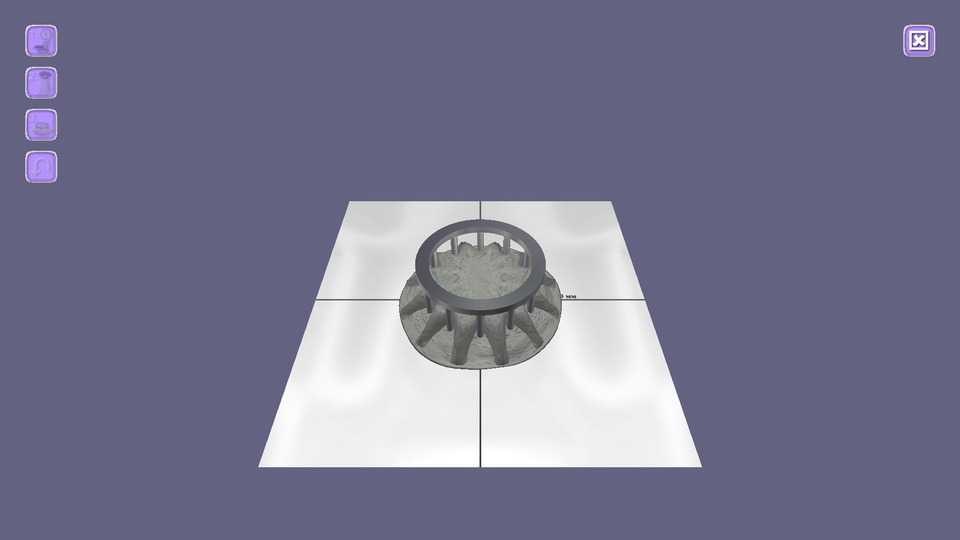
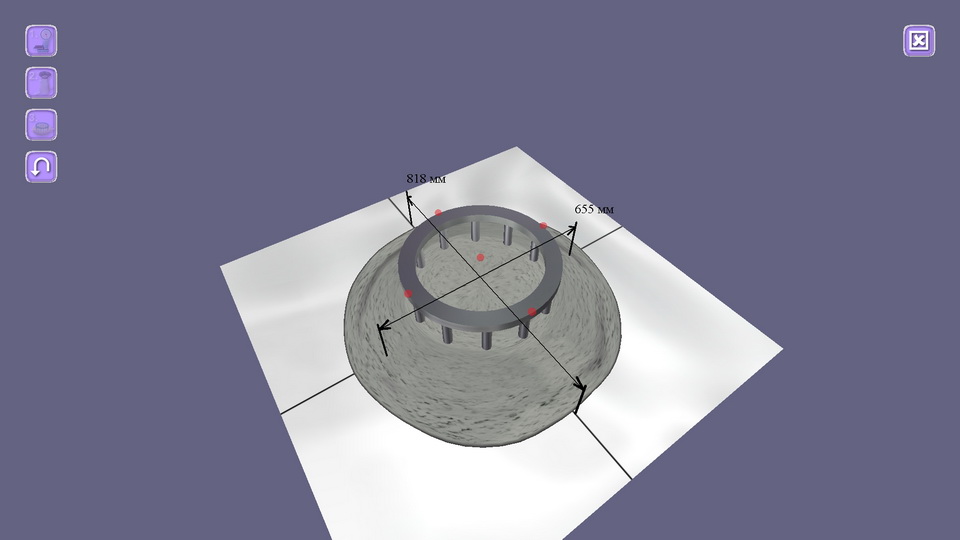
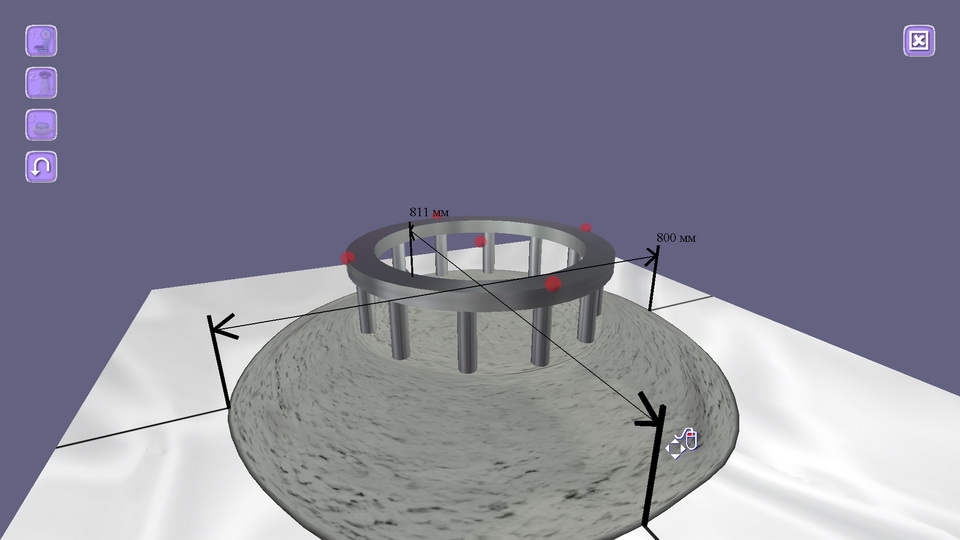
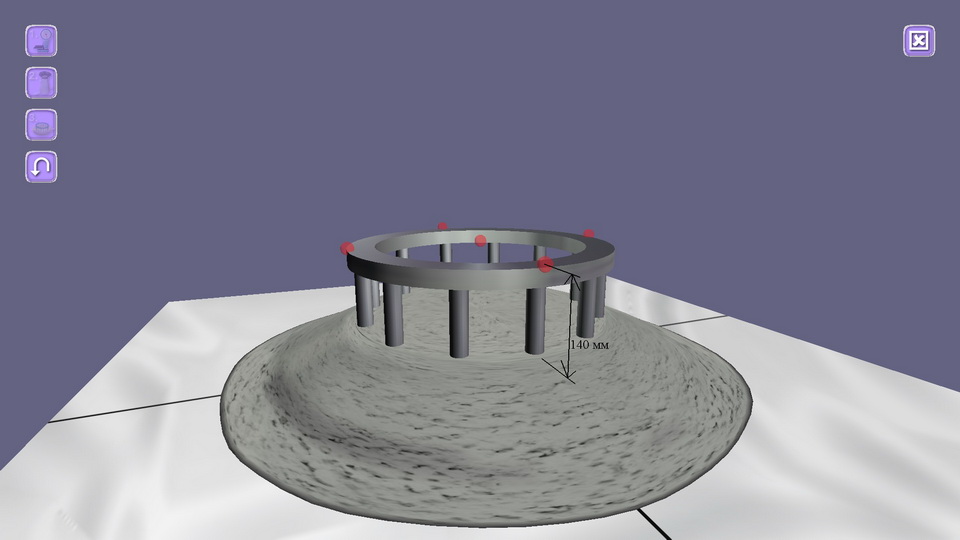
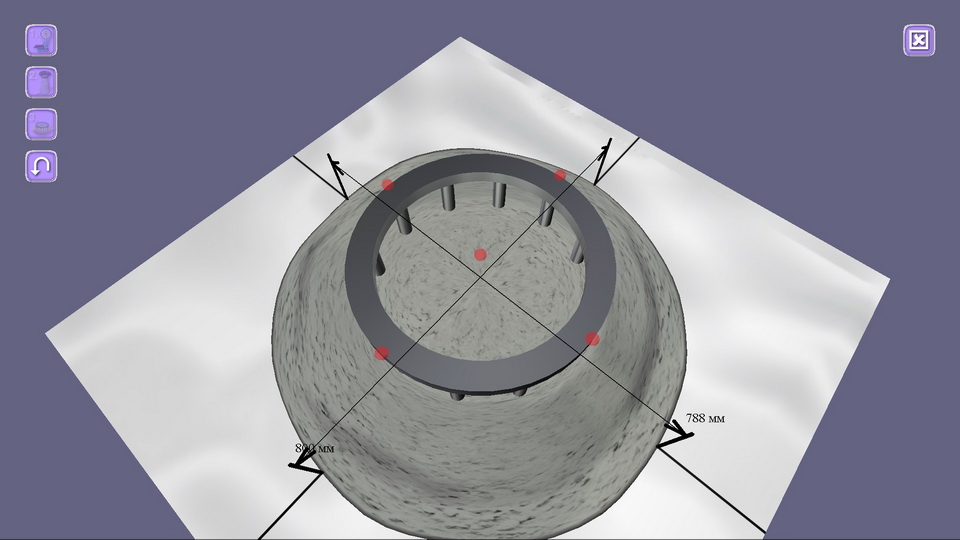
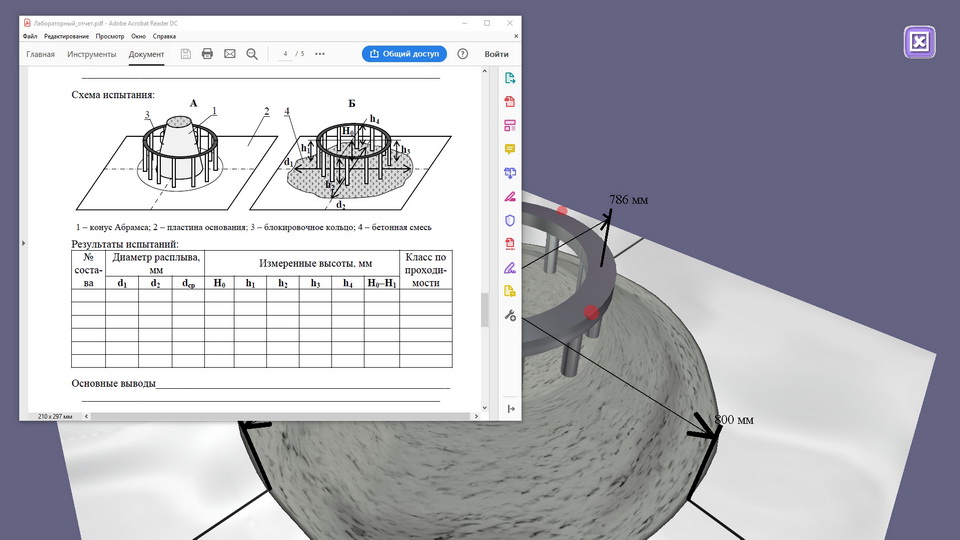
OBJECTIVE: The determination of the class of self-compacting concrete by compressive strength. SUMMARY: A hydraulic press with a maximum load of up to 1000 kN is simulated in the laboratory work. Compressive strength of samples-cubes of the self-compacting concrete is measuring. The 6 different formulations of self-compacting concrete are used in all laboratory experiments.








